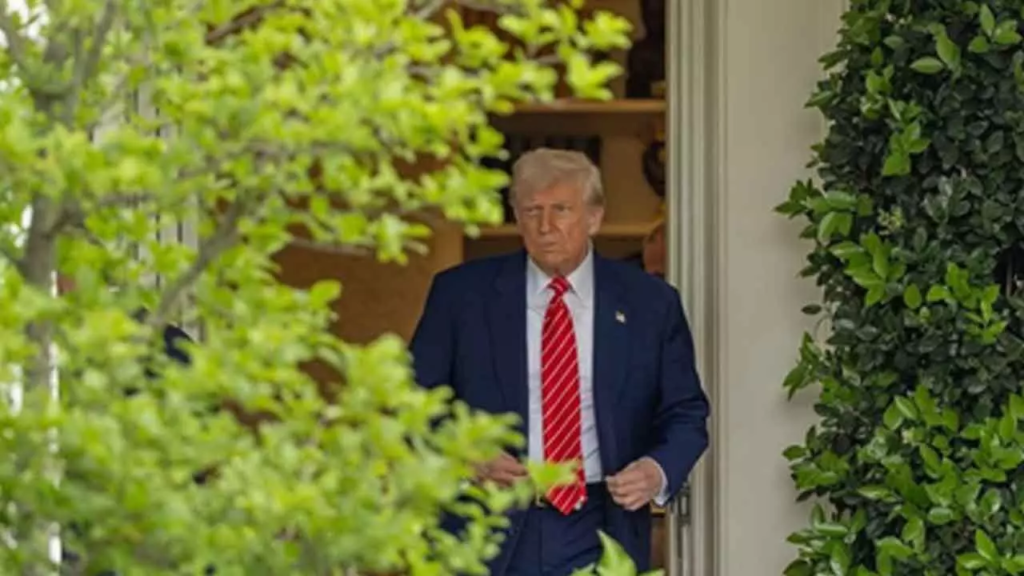
In a significant ruling on May 30, 2025, the U.S. Supreme Court granted the Trump administration the authority to revoke the temporary legal status of approximately 532,000 migrants from Cuba, Haiti, Nicaragua, and Venezuela. This decision, which lifts a lower-court order, marks a pivotal moment in the ongoing debate over immigration policy in the United States. The move is part of President Donald Trump’s broader agenda to strengthen immigration enforcement, but it has sparked intense controversy, with critics warning of the devastating impact on hundreds of thousands of lives. Here’s a closer look at what this ruling means, its background, and the human stories at its core.
What Happened?
The Supreme Court’s decision allows the Trump administration to end a Biden-era program known as the CHNV (Cuba, Haiti, Nicaragua, Venezuela) parole program. This initiative, launched in 2022, permitted migrants from these four countries to legally enter the U.S. for up to two years if they had a U.S.-based financial sponsor and passed security checks. The program was designed to address humanitarian crises in these nations, where political turmoil, violence, and economic collapse have driven many to seek safety abroad. Since its inception, over 530,000 migrants have used the CHNV program to live and work legally in the U.S. while pursuing asylum or other immigration relief.
However, the Trump administration, which took office in January 2025, moved swiftly to dismantle this program. In March, the Department of Homeland Security (DHS), led by Secretary Kristi Noem, announced plans to terminate the parole status of these migrants, arguing that revoking their legal protections would streamline deportations through a process called “expedited removal.” This decision faced immediate legal challenges from migrants and their American sponsors, who argued that the mass revocation violated federal laws requiring case-by-case evaluations.
U.S. District Judge Indira Talwani in Boston initially blocked the administration’s move, ruling that blanket terminations were unlawful and that parole revocations must be handled individually. The Trump administration appealed directly to the Supreme Court, which issued an unsigned order on May 30, lifting Talwani’s block. The ruling, made without detailed reasoning as is typical in emergency docket cases, allows the administration to proceed with revoking the legal status of these migrants while legal challenges continue in lower courts. Justices Ketanji Brown Jackson and Sonia Sotomayor dissented, with Jackson warning that the decision would “precipitously upend the lives and livelihoods of nearly half a million noncitizens” before their legal claims are fully resolved.
Why This Matters
The Supreme Court’s ruling has far-reaching implications for both the migrants affected and the broader U.S. immigration system. The CHNV program was a cornerstone of the Biden administration’s approach to managing migration at the U.S.-Mexico border. By allowing legal entry for up to 30,000 migrants per month from these four countries, it aimed to reduce illegal border crossings while offering temporary relief to those fleeing dire conditions. The program’s beneficiaries included families, workers, and community members who have integrated into American society, many of whom now face the threat of deportation.
Immigrant advocates have called this decision “the largest mass illegalization event in modern American history.” The revocation of legal status could expose nearly 1 million people to deportation when combined with a separate Supreme Court ruling earlier this month that allowed the administration to end Temporary Protected Status (TPS) for 350,000 Venezuelan migrants. For those affected, the consequences are stark: they must either leave the U.S. voluntarily or risk losing their jobs, homes, and community ties. Many have pending asylum applications, but the Trump administration has indefinitely suspended processing these claims, leaving migrants in limbo.
The dissent from Justices Jackson and Sotomayor highlights the human toll of this ruling. Jackson echoed Judge Talwani’s concerns, noting that ending legal protections prematurely forces migrants to “flee the country or risk losing everything.” This sentiment is shared by advocates like Karen Tumlin, co-counsel for the migrants, who described the ruling as a heartbreaking blow to people who “played by the rules” to enter the U.S. legally.
The Human Impact
Behind the legal jargon and policy debates are real people whose lives are now in upheaval. Take, for example, Maria, a Venezuelan mother who fled political persecution in her home country. She arrived in the U.S. in 2023 under the CHNV program, found work as a caregiver in Miami, and enrolled her children in school. With her parole status now at risk, Maria fears returning to a country where she faced threats to her life. “I built a new home here,” she told reporters. “Now, I don’t know where we’ll go.”
Similarly, Carlos, a Haitian migrant in New York, used the CHNV program to escape gang violence in Port-au-Prince. He now works as a delivery driver and supports his elderly parents back home. The Supreme Court’s ruling leaves him uncertain about his future. “I followed every step they asked,” he said. “I don’t understand why they want to send us back to danger.”

Communities across the U.S., particularly in cities like Miami with large Cuban, Haitian, and Venezuelan populations, are bracing for the fallout. Eduardo Gamarra, a professor at Florida International University, noted that the ruling has created fear and uncertainty in these diasporas. “People are on edge,” he said. “These are individuals who came here legally, contribute to our economy, and now face deportation to places where their safety is not guaranteed.”
The Political and Legal Context
The Supreme Court’s decision is one of several recent rulings supporting the Trump administration’s aggressive immigration policies. President Trump campaigned on a promise to deport millions of people, and his administration has wasted no time in targeting Biden-era programs like CHNV and TPS. The administration has also sought to deport migrants to third countries, such as El Salvador’s notorious CECOT prison, even if they are not citizens of those nations—a move that has raised concerns about human rights violations.
Legal battles over these policies are far from over. The Supreme Court’s ruling is temporary, allowing the administration to act while lower courts review the case’s merits. Immigrant advocates argue that the CHNV program’s termination violates the Immigration and Nationality Act, which requires individualized assessments for parole revocations. They also point to the lack of due process for migrants, many of whom were given only 30 days’ notice to leave the U.S. unless they qualify for other legal protections.
Public reaction has been polarized. Supporters of the ruling, including some Republican lawmakers, argue that it strengthens national security and restores order to the immigration system. Critics, including Democratic leaders and immigrant rights groups, warn of the humanitarian crisis it could trigger. María Elvira Salazar, a Cuban-American Republican congresswoman from Florida, urged the administration to find alternative relief for these migrants, emphasizing that they entered the U.S. legally.
What’s Next?
As legal challenges continue, the fate of these 532,000 migrants remains uncertain. Lower courts will eventually rule on whether the Trump administration’s mass revocation complies with federal law, and those decisions could return to the Supreme Court for a final judgment. In the meantime, affected migrants face difficult choices: stay and risk deportation, leave voluntarily, or seek other legal pathways, which are often complex and inaccessible.
The ruling also raises broader questions about the future of U.S. immigration policy. With the Trump administration pushing for rapid deportations and stricter border controls, advocates worry about the erosion of humanitarian protections. At the same time, the decision underscores the Supreme Court’s role in shaping immigration debates, particularly through its emergency docket, which allows quick rulings without detailed explanations.
For now, communities across the U.S. are rallying to support affected migrants. Organizations like Human Rights First are calling for public action to protect these individuals and their families. As Anwen Hughes, a lawyer for the plaintiffs, stated, “The court’s decision ignores the harm inflicted on innocent people who followed the law.”
Sources
- U.S. Supreme Court lets Trump revoke humanitarian legal status for migrants
- Supreme Court Allows Trump Administration to End Biden-Era Migrant Program for Now
- Supreme Court allows Trump to begin removing 500,000 immigrants from Cuba, Haiti, Nicaragua and Venezuela
Also Read :- Memorial Day Reflections Dominate Online Conversations, Honoring Fallen Soldiers Nationwide





